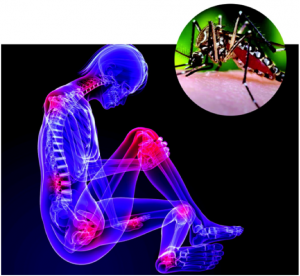Chikungunya in Haiti
You may have read in the news about the spread of a disease called chikungunya in Haiti. And you may also be wondering what it is and what type of harm it causes. The following was written by Dr. Joe Markee, an HFH board member, who was recently in Haiti and had a chance to see the effects of the disease.
Chikun-what?
There are many diseases and conditions in Haiti that you really should try to avoid: malaria and diseases transmitted by contaminated water, such as typhoid fever or cholera. Now there is a new disease that you would never want – chikungunya fever. This viral disease started more than 60 years ago in Africa, probably Tanzania. The name comes from an African term meaning “bending over,” because of the general severe joint pain. Recently with the ease of international travel, this virus has invaded the Western Hemisphere, particularly the Caribbean. Six months ago, chikungunya was practically unheard of in Haiti. Not now.
If there is any good news about this condition, it’s that it is preventable with appropriate precautions, such as frequent use of mosquito repellent or wearing permethrin-treated clothing. Also, it is reported that there is lifetime immunity with a single prior infection. The other good news is that the mortality rate is very low.
There is also bad news: no treatment for this condition is available. Children are very susceptible to this disease. This virus is somewhat similar to dengue fever, which also causes fever and pain, but not usually severe joint pain. Both diseases are carried by the same mosquito, aedes aegypti, which bites you during the day, not in the morning or evening.
What are the symptoms? Last month our team saw many patients with fever, joint pain, including their toes, and a rash on different parts of their body. Some patients had a rash on their face, hands, or only on their back with very few other symptoms. Many patients had “relapses.” They might have had a fever 1-2 weeks earlier, then started to feel better but later the symptoms returned. Unfortunately, there are some reports that this disease may persist for several months, or longer.
During the two weeks that we were in Haiti, every Haitian I talked to was well aware of chikungunya disease, and most said they had already been infected. They actually talked more about “the epidemic” than about the World Cup. Amazing.
Many of the Clinic of Hope staff are suffering with chikungunya. Thank you for supporting these faithful workers, who even though they suffer, continue to serve in the clinic. Please pray for the people of Haiti. Chikungunya fever is everywhere in the country. Without access to the preventive measures we normally use, their suffering will continue.
To help: donate to the Clinic of Hope to support the staff who are caring for patients every day.













 Instagram Feed
Instagram Feed

